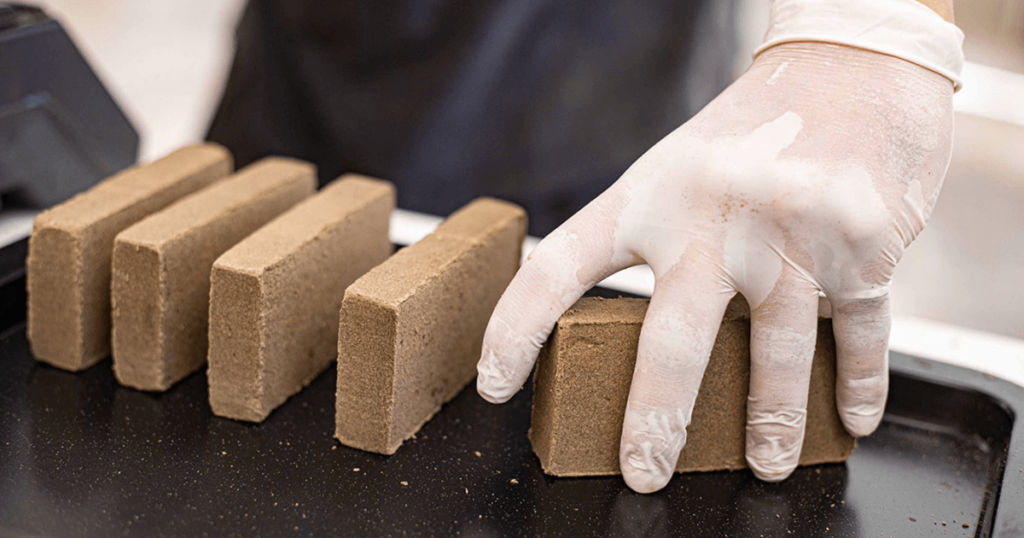Cannabis News
What Is Hash?
Hash is a term that has gained immense popularity in the digital world. It is a mathematical function that converts input data of any size into a fixed-size output. This output is called a hash or hash value, and it serves as a digital fingerprint of the original data. Hash functions are essential tools in modern cryptography, as they provide a secure way to store and transmit sensitive information.
In this article, we will explore the concept of hash in depth, including its uses, advantages, and limitations. Whether you are a computer science enthusiast, a security professional, or just curious about how the digital world works, this article will provide a comprehensive introduction to the world of hash.
What is Hashish (aka Hash)?
Hashish, commonly known as hash, is a cannabis-derived drug made from the resinous trichomes of the cannabis plant. These trichomes are collected, compressed, and then heated to produce a concentrated form of cannabis.
Hash is typically consumed by smoking, either in a pipe or mixed with tobacco, and its effects can range from feelings of relaxation and euphoria to increased appetite and altered perception of time. The potency of hash can vary depending on factors such as the strain of cannabis used and the methods used to produce it.
While it is legal in some countries, hashish is illegal in many others, and its possession, sale, or use can result in legal consequences. Despite its illegality in some areas, hashish remains a popular drug of choice for many individuals around the world.
Where Does Hash Come From?
Hashish, or hash, has been used for centuries and has its origins in the Middle East and Central Asia. The cannabis plant, which is the source of hash, has been grown in these regions for thousands of years and has played a significant role in their cultural and religious practices.
The production of hash involves collecting and processing the resinous trichomes of the cannabis plant. These trichomes are most concentrated on the flowers, or buds, of the female cannabis plant. In traditional hash-making techniques, the plants are harvested and then rubbed or beaten to collect the trichomes, which are then compressed into a block or ball.
Today, many different methods are used to produce hash, including mechanical separation techniques that use sieving or tumbling to separate the trichomes from the plant material. Chemical solvents may also be used to extract the resinous material from the plant.
Hash is produced in many parts of the world, including countries in the Middle East, Central Asia, South Asia, and North Africa. It is also produced in countries such as the Netherlands and Canada, where cannabis is legal for medicinal and recreational use. The quality and potency of hash can vary widely depending on factors such as the strain of cannabis used, the methods used to produce it, and the conditions under which it is stored.
Different Types of Hash?
There are several types of hashish, each with its own unique characteristics, potency, and effects.
Here are some of the most common types:
- Traditional Hash: This is the most common type of hash and is typically made by rubbing or beating the resinous trichomes off the cannabis plant. It is usually dark brown or black in colour and has a pungent, earthy aroma.
- Bubble Hash: Also known as ice hash, this type of hash is made using ice water to separate the trichomes from the plant material. The resulting product is typically lighter in colour and has a more delicate flavour and aroma than traditional hash.
- Finger Hash: This is a type of hash that is made by rubbing the hands over the cannabis plant to collect the resinous trichomes. It is typically less potent than other types of hash but can be a good option for those who prefer a milder experience.
- Dry Sift Hash: This type of hash is made by sifting dried cannabis flowers through a screen to collect the trichomes (aka kief). The resulting product is typically light brown or blonde in colour and has a sweet, floral aroma.
- Rosin Hash: Rosin is a type of cannabis concentrate that is made by applying heat and pressure to the cannabis plant. It is typically made using a rosin press and can be made into hash by shaping the resulting concentrate into small balls or patties.
The potency and effects of each type of hash can vary depending on the strain of cannabis used, the methods used to produce it, and the conditions under which it is stored. As with any cannabis product, it is important to start with a small dose and work your way up to avoid any unwanted effects.
Benefits of Cannabis Hash
While cannabis hash, like any other form of cannabis, can have some potential risks and side effects, it also has several potential benefits.
Here are a few:
- Pain Relief: Cannabis has been used for centuries as a natural pain reliever. Hashish, like other cannabis products, contains compounds known as cannabinoids that can help alleviate pain by interacting with the body’s endocannabinoid system.
- Relaxation: Hashish can have a calming and relaxing effect on the mind and body, making it a popular choice for those looking to unwind or de-stress after a long day.
- Improved Sleep: The sedative effects of hashish can also help improve sleep quality for those struggling with insomnia or other sleep disorders.
- Appetite Stimulation: Cannabis is known to stimulate appetite, a phenomenon known as the “munchies.” This can be particularly beneficial for those undergoing chemotherapy or suffering from conditions that cause a loss of appetite.
- Anti-Inflammatory Properties: Cannabis has anti-inflammatory properties that can help reduce inflammation and swelling in the body, which may be beneficial for those with conditions such as arthritis or inflammatory bowel disease.
It’s important to note that the benefits of cannabis hash can vary depending on the individual and the specific product. As with any cannabis product, it’s important to talk to a healthcare provider before using cannabis hash to ensure it is safe and appropriate for your needs.
How to Take Hash?
Hashish, like other forms of cannabis, can be consumed in a variety of ways.
Here are some of the most common methods of taking hash:
- Smoking: One of the most popular ways to consume hash is by smoking it. Hashish can be smoked in a pipe, bong, or rolled into a joint or blunt. It is often mixed with tobacco to make it easier to smoke and to enhance the flavour.
- Vaporizing: Vaporizing, or “vaping,” is a method of consuming hashish that involves heating the product to a temperature that releases the cannabinoids and other compounds without producing smoke. This can be a healthier alternative to smoking, as it does not produce harmful tar and other chemicals.
- Weed Edibles: Hashish can also be consumed in edible forms, such as baked goods, candies, or other food items. When consumed this way, the effects may take longer to kick in, but they can last longer and be more intense.
- Dabbing: Dabbing is a method of consuming concentrated cannabis products, including hashish. It involves heating a small amount of hashish on a hot surface and inhaling the resulting vapour.
- Tinctures: Hashish can also be dissolved in alcohol or another liquid to create a tincture. Tinctures can be consumed orally or added to food or drinks.
When consuming hashish, it’s important to start with a small dose and work your way up gradually to avoid any unwanted effects. The potency of hashish can vary widely depending on factors such as the strain of cannabis used, the methods used to produce it, and the conditions under which it is stored. It’s also important to note that the effects of hashish can vary depending on the individual and other factors, such as the method of consumption and the environment in which it is consumed.
Where to Buy Hash Online in Canada?
In Canada, cannabis has been legal for recreational use since 2018, and there are now many licensed retailers and online stores that offer a wide variety of cannabis products, including hashish. To buy hashish online in Canada, you must be at least 19 years old and reside in a province or territory where cannabis is legal.
You can find trusted cannabis retailers and online stores, like Daily Edibles, by visiting the website of your provincial or territorial regulatory authority. These websites typically provide information on the licensed retailers and online stores that are authorized to sell cannabis products in your area. It’s important to only buy from licensed retailers and online stores to ensure that you are getting the best hash deals on safe, high-quality products that comply with Canadian regulations.
When buying hashish online in Canada, it’s also a good idea to read reviews and do some research on the products and brands you are interested in before making a purchase. You can also check out independent listing sites like CannabisOntario. Look for products that have been tested and labelled for potency and purity, and consider the method of consumption that is best for you. Always consume cannabis products responsibly and in accordance with Canadian laws and regulations.
References
- Aggarwal, S. K., & Carter, G. T. (2018). Cannabis: History, pharmacology, and implications for the acute care setting. The Journal of the American Osteopathic Association, 118(10), 679-685. doi: 10.7556/jaoa.2018.143. Available at: https://www.ncbi.nlm.nih.gov/pmc/articles/PMC5312634/
- Booth, J. K., & Bohlmann, J. (2019). Terpenes in cannabis sativa – from plant genome to humans. Plant Science, 284, 67-72. doi: 10.1016/j.plantsci.2019.03.022 Available at: https://www.sciencedirect.com/science/article/pii/S0168945219301190
- Get Kush. (2023, May 2). Best Online Dispensary Canada | Buy Hash Online. Available at: https://getkush.cc/product-category/concentrates/hash/
- National Institute on Drug Abuse. (2021). Marijuana drug facts. Retrieved from https://www.drugabuse.gov/drug-topics/marijuana
- Cannabis Ontario. (2023, May 2). Find the best cannabis in Ontario. Available at: https://cannabisontario.net/
- Substance Abuse and Mental Health Services Administration. (2021). Key substance use and mental health indicators in the United States: Results from the 2020 National Survey on Drug Use and Health (HHS Publication No. PEP21-07-01-003, NSDUH Series H-56). Rockville, MD: Center for Behavioral Health Statistics and Quality, Substance Abuse and Mental Health Services Administration. Available at: https://www.samhsa.gov/data/sites/default/files/reports/rpt35325/NSDUHFFRPDFWHTMLFiles2020/2020NSDUHFFR1PDFW102121.pdf



